“When you come to see me during the Easter break, I trust you will bring your medal with you and tell me all about the festival.”
These words were written by a loyalist prisoner to his daughter in 1978 on the occasion of her first dancing festival at the June Betts School of Irish Dancing in Carrickfergus, and it is one of the many poignant tales to be found in my new book, Irish Dancing: The Festival Story.
This illustrated history book provides an illuminating record of an aspect of shared culture that is relatively unknown outside Ulster. The festival tradition of Irish dancing is unique in that it has always flourished in unionist areas. Indeed, the first musical festival to add Irish folk dancing was the Larne Musical Festival of 1928. During the Troubles, when safety considerations should have deterred parents from taking to the roads, the festivals thrived, attracting numbers as large as some of the regional feiseanna.
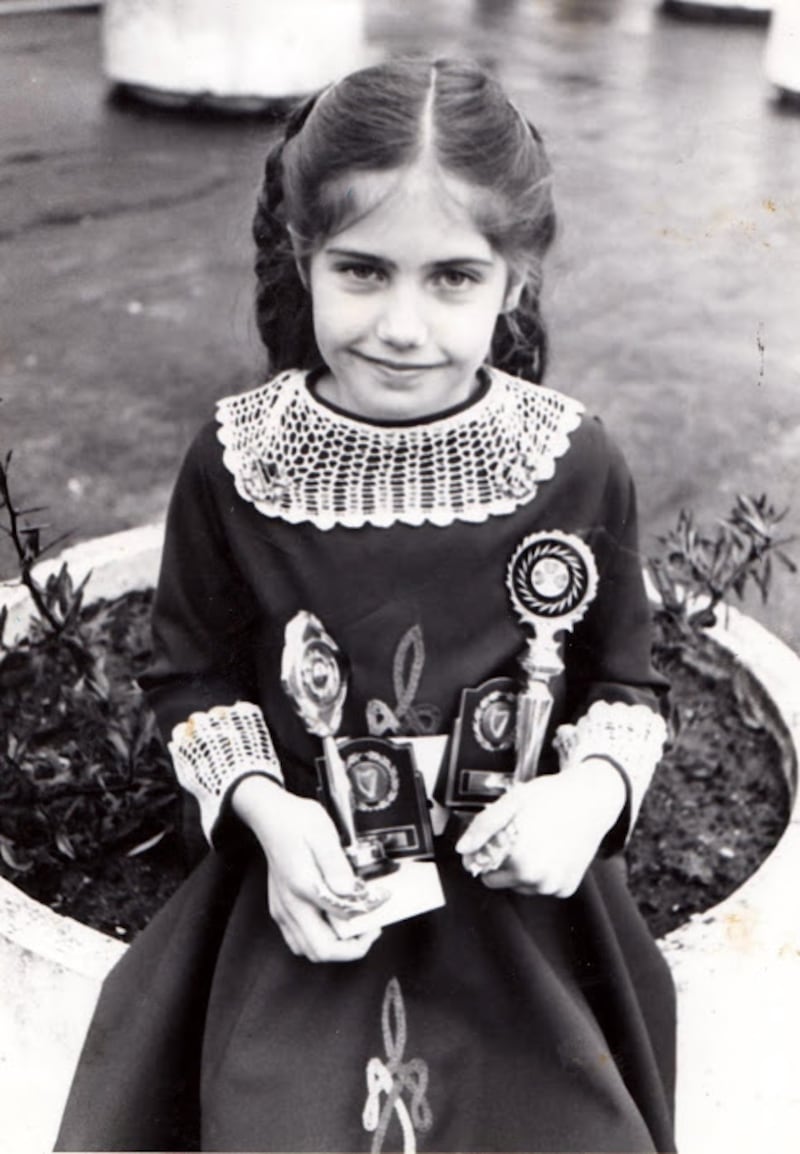
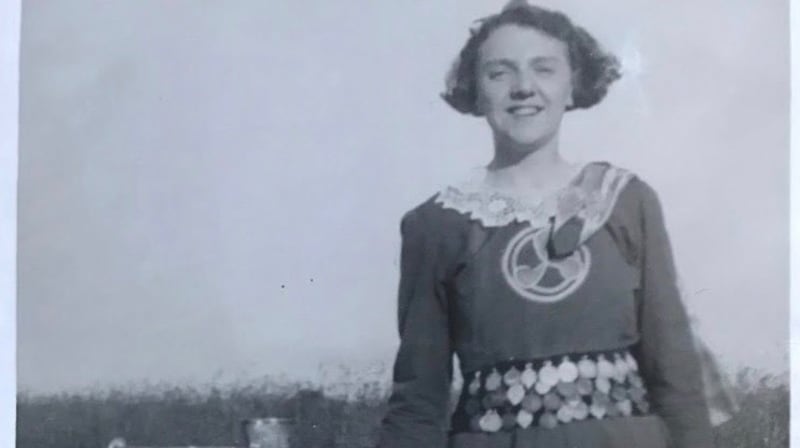
Tens of thousands of Catholic and Protestant children have held hands on the dancing stage since the 1920s. The Irish dancing festivals which took place in Orange Halls and Catholic Parochial Halls were immune from politics, and Irish dancing teachers, some of the greatest proponents of cross-community relations of their time, ensured that thousands of children escaped the burden of sectarianism through Irish dancing.
The Irish language & An Coimisiún rules
At the 1934 Larne Musical Festival, a 12-year old girl called Marjorie Andrews was awarded the Cashel Bowl for the most promising all-round junior dancer, just ahead of Olive Parker from Ballymena. Andrews continued to fulfil that promise and was encouraged by her teacher, Patricia Mulholland, to open her own school of dancing. In 1936, Grace Martin became the first of many hundreds of pupils when Andrews began teaching a class in the front room of her home at 11 St John's Place. She was 15 years old, and she would soon outgrow her childhood home and open a studio at 51 Point Street, just around the corner. Like her teacher, Andrews was ambitious and determined, and she did not allow the rules of An Coimisiún to deter her from entering the feiseanna.
Under An Coimisiún rules, the Irish language was a prerequisite to the feis stage, and whilst the Irish language was not part of the musical festival syllabus, it had always been at the heart of the feiseanna. Rule 22 of An Coimisiún in 1931 stated: “each entrant to a feis dancing competition must undergo an oral Irish examination and each feis committee must be satisfied that every entrant has a speaking knowledge of Irish.”
Of Andrews’ large classes, most of the pupils were Protestants who did not learn the Irish language at school. Andrews, herself Anglican, was pragmatic: she simply invited an Irish language teacher into her home at St John’s Place to provide lessons to a few of her Protestant pupils.
One pupil of Marjorie's during this period was Noel Clarke, a favourite of adjudicator George Leonard and a Protestant with no grasp of the Irish language. Andrews knew that he was bright and that he was set to attend Larne Grammar School, so she found a way around the language exam and entered him into an Irish history competition that served as an alternative prerequisite for entry into the feis. Noel was dispatched to a priest in Ballymena, who taught him a whole new version of Irish history with a great emphasis on nationalist heroes like Daniel O'Connell. Once he passed the history test at St Louis School, he was ready to attend the Feis na Gleann, where he won the Co Antrim junior championships in the early 1940s, beating fellow Larne dancer and runner up, Nancy McManus.
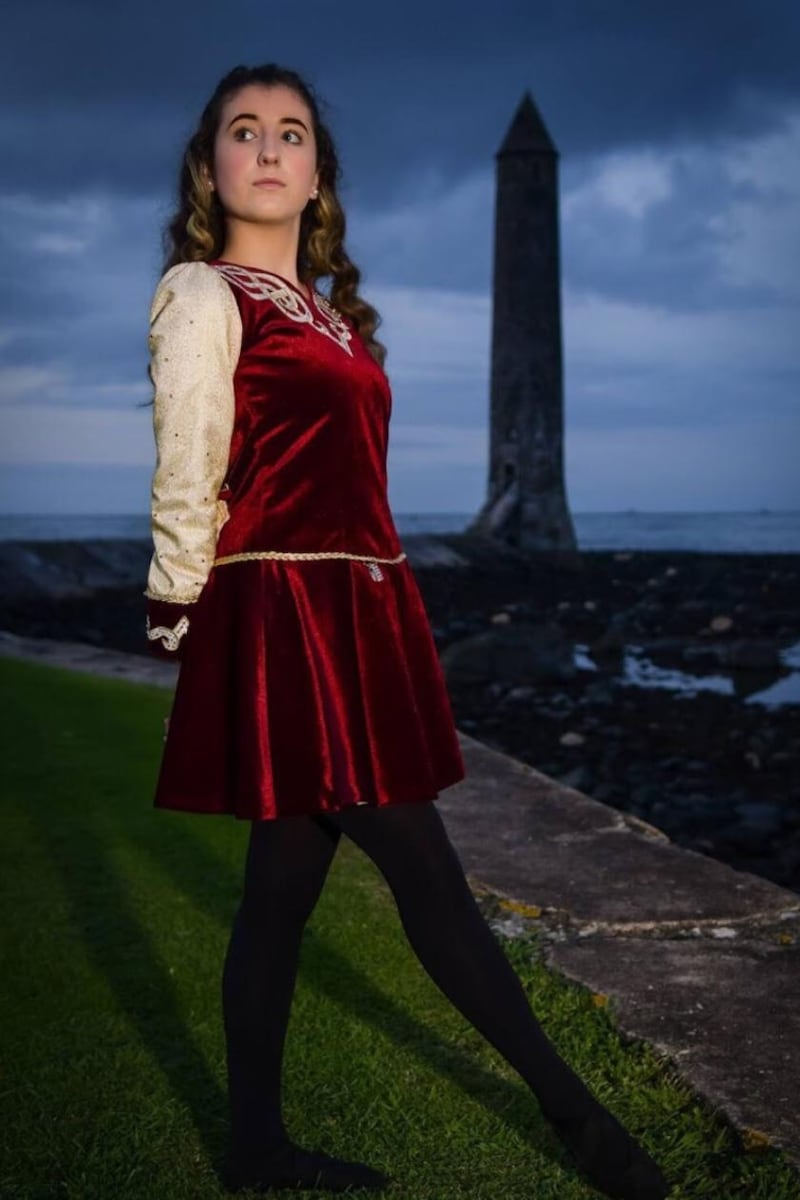
Gardiner was not recognised in her lifetime for her contribution to cross-community relations or for her dedication to the arts in Northern Ireland, but she offered a sanctuary of Irish culture to thousands of children over six decades.
The British Army woman who won the All Ireland championships
Betty Lewis from Larne was one of Ireland's greatest dancers.
Her first outing on the Irish dancing stage was in 1929. At that time, she was one of Mr O'Rafferty's pupils, but she would later go on to dance with Stella Mulholland, who opened a class in Larne in 1931. Betty immediately took to Irish dancing, winning the Cashel Bowl at the Larne Musical Festivals of 1930 and 1931 and winning the junior section at the 1930 North of Ireland Dance Festival in Belfast. As a contemporary of future dancing teachers, Alice McAleer from Belfast and Betty McCulloch from Ballymena, she frequently danced on stage with them at competitions.
At the Larne Festival in March 1932, Mr McGinley recommended that the dancers infuse more ‘go’ into their work. He said that some dancers were like Greek statues rather than hearty, jovial dancers, and he told them to take a leaf out of Betty Lewis’ book. She smiled all the way through her winning dance in the under-12 section and danced as if it were a pleasure.
Betty dominated the Irish dancing stage at a time when dancers were permitted to move between the festivals and feiseanna, and unlike her Mulholland School successors, who were limited to the musical festival stages, she was able to enter feis competitions at a national level. In April 1943, when she was a serving member of the British Army, she won the senior title of the All-Ireland championship in Dublin, despite not having danced for two and a half years.
Through the barricades
One particularly challenging Larne festival was that of May 1977, which coincided with a loyalist protest known as the United Unionist Action Council strike. A quick decision had to be made by the committee on the eve of the strike. Not only were there threats of roadblocks and transport disruptions, but it was feared that the electricity supply would be lost if the Ballylumford Power Station closed down. In the end, commitment to Irish dancing prevailed and the committee voted 3-1 to keep the festival open. The 1,200 additional soldiers drafted in from England to address civil disturbances were small in number compared to the 2,142 dancers who took to the roads to travel to the McNeill Hall in Larne.
By the third day of the strike, there were 300 roadblocks. One thousand cases of intimidation were reported to the police throughout the province, but none of that stopped the dancers from Portadown, Belfast, Bangor, Glenravel and Ballymena from getting to Larne. Indeed, Nancy Hooper recalls that Sadie Bell gave the boys at the Ballymena barricades a good telling off before proceeding through the country roads with her dancers.
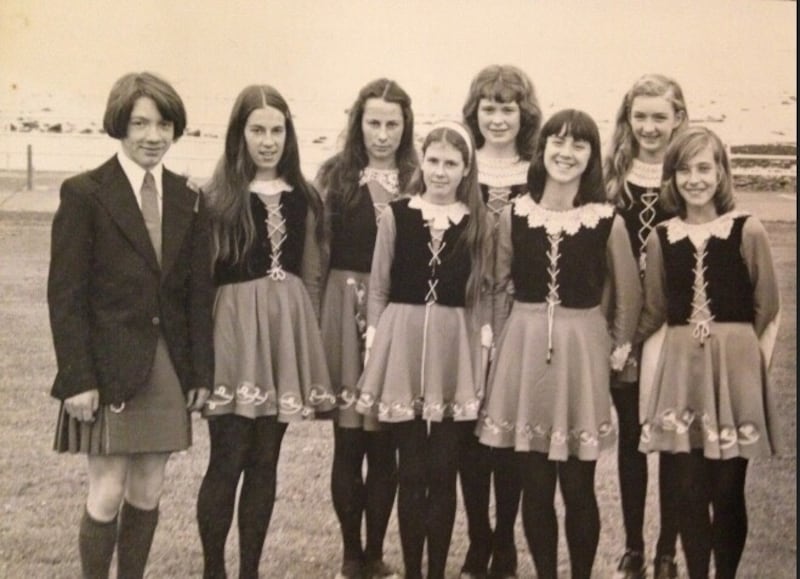
Irish fashion designer Geraldine Connon gives an insight into what it was like dancing during the worst years of violence in Northern Ireland. By the time she was a teenager in the 1970s, there was little else to do against the backdrop of Northern Ireland's conflict. Geraldine explains: 'Irish dancing, especially festival Irish dancing, transcended all religious faiths: it was all about the performance.'
Geraldine was selected as senior champion at the 50th anniversary of the Larne Irish Folk Dancing Festival in 1978, and was also recognised with a special prize for her hornpipe performance. When she won the senior championship again in 1979, the number of entries at the Larne Irish folk dancing competition was 2,400, a considerable achievement for any voluntary organisation. Lady Antrim, president of the Larne Irish Folk Dancing Association, explained poignantly to the audience at the festival, 'Irish folk dancing is one of the arts which brings all sections of the community together to work and compete in harmony.'
Grassroots peace efforts in Carrickfergus
One 11-year-old Protestant girl called June Betts (McCalmont) made her own way to an Irish dancing class at the Mount St Nicholas chapel school in Carrickfergus in 1958. There she met Vourneen O'Connor, a well-known Irish dancing teacher of the feis tradition who was taught by Anna McCoy.
June’s mother was surprised when it transpired that her daughter had found this unexpected hobby, but as it became clear that a natural talent had been unleashed, surprise was replaced with pride. June’s mother, herself a talented ballroom dancer, provided a great deal of encouragement to her daughter, and, in no time, June was performing her Irish dances before her family at Orange Order social occasions.
As a teenager, June experimented with the festival style of Irish dancing with Mrs Gardiner at the Andrews School in Larne, but she soon returned to her roots, preferring the feis steps, which were slightly more intricate and modern after the 1950s when the feis and festival movements diverged. When June set up a dancing school 50 years ago, she migrated back to the festival Irish dancing scene, where she remained for the next four decades. She made a significant technical mark on the footprint of Irish dancing in east Antrim, adding the techniques she had learned at feiseanna, and teaching many hundreds of pupils to an exacting standard.
June was a founding member of the Festival Dance Teachers’ Association, and despite a lack of support from the local council, she ran the Carrickfergus Festival for 25 years. She also ran classes in housing estates blighted by Northern Ireland’s Troubles, introducing Irish dancing to some of the most unionist families in Ulster. This was grass-roots cross-community work, and June was among peace-making efforts long before money was made available for such activities.
A common spirit of unity and oneness
In 1975, and with two children under the age of five, Billy Mitchell was imprisoned for loyalist paramilitary activities. He served his sentence and became a peacemaker dedicated to cross-community work until he died in 2006.
His daughter, Juliane, took up Irish dancing in 1977 at the age of six, and she kept dancing and competing until she was 18, a timeline that coincided with her father’s prison sentence. Juliane attended the June Betts’ school in various locations, including the Tree Tops hall in the Sunnylands estate in Carrickfergus.
Juliane’s mother, Mena, who raised two children alone while her husband was in prison, made great sacrifices for her family, stitching dancing dresses and crocheting collars and cuffs for very little money to ensure that her children’s needs were met. Mena, an artist with a refreshing outlook on Northern Ireland and its culture, was also concerned that her daughter should experience the Irish culture that was so often shunned in loyalist communities. She encouraged Juliane to take up Irish dancing and violin and walked miles to show her live Irish music sessions.
By setting up Irish dancing classes in areas affected by political conflict, June Betts made a difference to little girls like Juliane, just as she made a difference to fathers like Billy Mitchell. The impact of Irish dancing can be felt in the following words, composed by Billy Mitchell on the occasion of his seven-year-old daughter’s first Irish dancing medal at the Betts School:
'There is a great heritage and tradition in Irish dancing – as there is in the folk songs and dances of any country – because it is part of the culture and life of the ordinary people. It is a culture that comes from the heart and soul of the people and helps to weld us all together as a common spirit of unity and oneness. Not only so, but in a world of hatred and violence, it always brings a welcome interlude of peace and contentment. Believe me, Juliane, it will be a real worthwhile effort if you can manage to carry on. Music and dancing are forms of entertainment which soothe the savage beast and bring peace and tranquillity in the midst of life's toils. When you come to see me during the Easter break, I trust you will bring your medal with you and tell me all about the festival.'
William Mitchell, Maze prison,
Sunday, 12th March, 1978
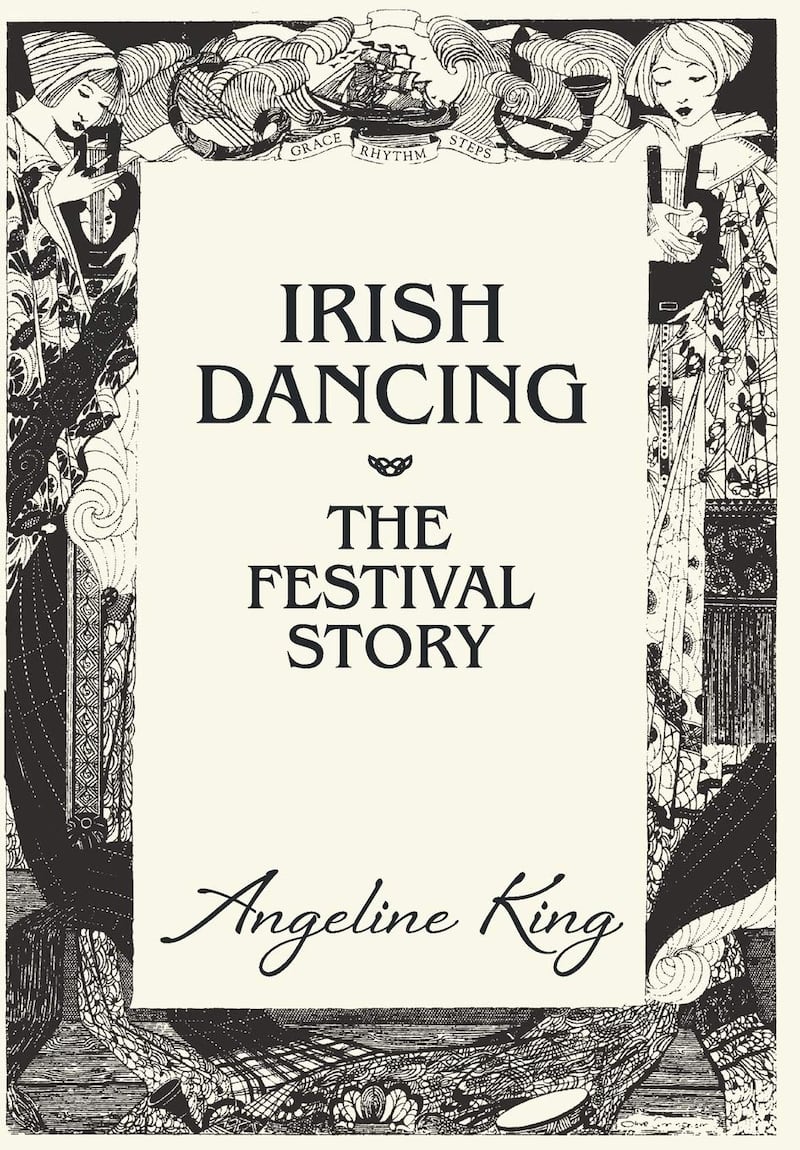
Irish Dancing: The Festival Story by Angeline King is published by www.leschenaultpress.com at £20, 350pp, illustrated with 34 black and white photos



















